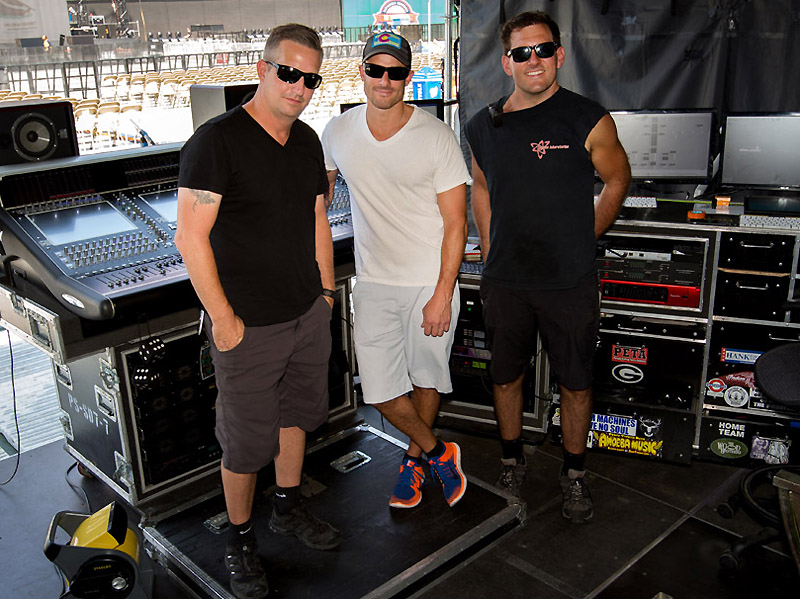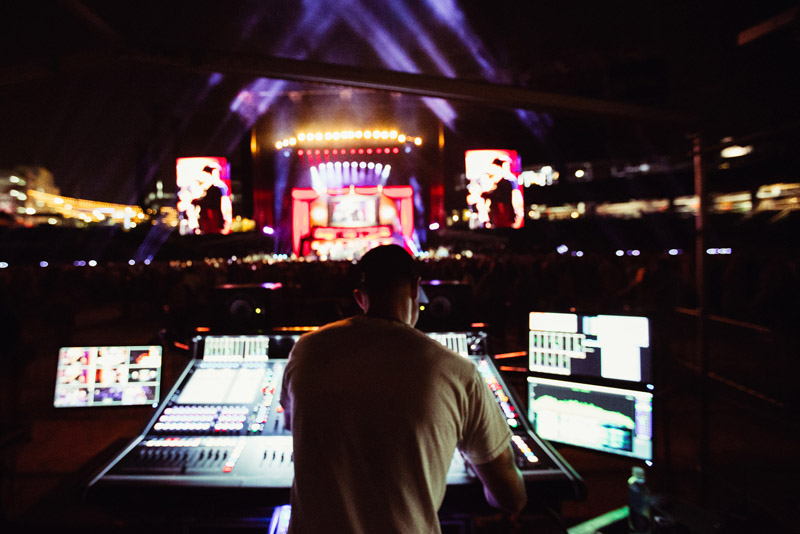
“We’re using some powerful tools before we even put anything up,” Soper states. “A big part of being successful every day is being able to do things efficiently. We put out all six of our measurement mics while tuning. We look at everything on-axis and off-axis, and see how it all comes together in real-time with Smaart at the console area. There is no way we could do these shows as fast as we need to without this level of involvement.
“The L-Acoustics curve is really spot-on and very musical right out of the gate, but if you do your homework at each stop quickly and accurately, you’re going to have even better performance over the entire coverage area,” he adds.
For his part, front of house engineer Eric Roderick was one of the primary forces responsible for making the move to L-Acoustics this year.
“These are bigger loudspeakers than we were using before, and I definitely like them in the stadiums,” he explains. “Our previous rig did well, but every time I mixed on an L-Acoustics system, I thought to myself, ‘man, I gotta get back in front of one of these’.” This system provides me with more of the body I want, and I couldn’t be happier with everything we’ve done so far this year.”
Moving Freely
Roderick – just like his counterpart, monitor engineer Andy Hill – orchestrates his mixes from behind a DiGiCo SD7 digital console. With 112 inputs coming in at his desk and a need for the talent to move freely between the three different levels of the stage, the show is wireless-intense, with RF wrangler and monitor tech Jake Bartol given the task of keeping all the frequencies aligned and functioning utilizing tools that include IAS software, Sennheiser WSM software, and Shure Wireless Workbench 6. Frank Sadler is the crew’s stage patch and Pro Tools guru.

While Zac Brown is indeed a pick-shredding guitar player, Roderick says that his voice is “super-easy to work with, he has great dynamic range and belts it out. The only real trouble spots – if you can call them that – are in the 800 Hz to 2K range. This is where I have to squash things a little bit occasionally. When he gets up high he loses a little bit of low-end body, so I just round it up with an upward lift in the mid-low frequency range.”
Drawing from an acoustical palette residing entirely within his console, Roderick relies heavily on Waves plug-ins, with his favorite go-to tool for Brown’s vocals being the C6 multiband compressor. He also uses the C6 from the master bus on the left/right mains to “kind of squeeze down whatever may be sticking out” as the occasion warrants. Further benefits are realized with Waves CLA-76 compression and some de-essing.
“I use the CLA-76 on Zac’s acoustic, as well as on the violin,” Roderick says. “And then I’ve really gotten into one Preston turned me onto this year called Center. It’s a stereo enhancer plug-in a lot of people use for final mixes and mastering. I use it on background vocals and it spreads them out really nice with fabulous imaging.”
When it comes to the totality of his mix, Roderick builds his sound with an emphasis on accurately translating that which the band does so well onstage to the crowd. “It’s about the band’s intrinsic energy,” he imparts. “First and foremost are the vocals. This is a very vocal and harmony-oriented group of musicians, so that’s always going to be square one for me, and everything else follows under it.”

